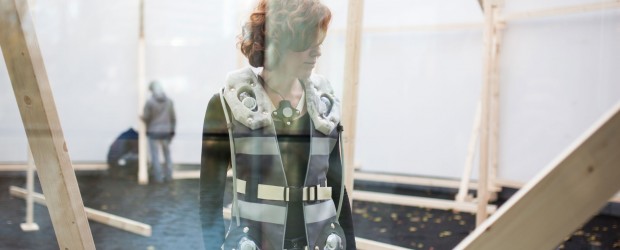The Intimate Earthquake Archive, 2017
The Intimate Earthquake Archive, 2017
What each generation contributes to the next is an education of attention.
James Gibson in The Ecological Approach to Visual Perception
The Intimate Earthquake Archive focuses on man-made earthquakes that have occurred over the last 32 years in the largest field for natural gas in Europe, located in the Dutch province of Groningen. While researching this phenomenon the artist came across an overwhelming amount of data available in scientific archives: a warehouse full of core samples, rows upon rows of sand and soil tests in laboratories. Furthermore, all the seismic activity of the earthquakes is meticulously recorded, stored and published in the immense digital database of the Dutch Meteorological Institute.
Meanwhile, visiting people in the province and hearing their stories of feeling the earthquakes frequently passing through their bodies and their homes, the artist wondered about the role of the sensing body in archiving these events. As some people in the Groningen Gas Field claim to wake up in their beds, before they feel the tremors across the earth, one may ask: is the sensation of a man-made earthquake fundamentally different than the sensation of a natural one?
The Intimate Earthquake Archive aims to connect the digitized seismic activity with the sensing body. Visitors can explore the archive by positioning themselves among a series of radio-transmitting core samples. Each of them transmits the dataset of one of the 12 strongest man-made earthquakes recorded in Groningen. Wearable „interfaces“ act as receivers for these signals, producing a composition of tremors on the surface of the body - in the same way the seismic waves moved across the land.
These vibratory compositions are created by artist Jonathan Reus, through direct manipulation of the archival datasets into sonic vibrations. The resulting compositions are intended to inspire „deep listening“ within the body. The Intimate Earthquake Archive is thus a kind of test ground for the visitor to attune herself to a future marked by man-made geological change.
Sissel Marie Tonn (DK)
°1986
Sissel Marie Tonnis a Danish artist based in The Hague. In her practice she focuses on sensory structures of attention and perception within environments undergoing change. Recent work combines writing, multi-media installations and wearable objects and instruments that open up questions of the biological, social, mental and ethical implications of perceiving (and thus potentially acting upon) changes in the environment.
Sissel Marie Tonn is also the co-founder of the initiative Platform for Thought in Motion together with artist Jonathan Reus. In collaboration with Flora Reznik they arrange reading groups and other events in The Hague, engaging artists with scholars in a mutual exchange of knowledge. Marie Tonn completed a master in Artistic Research at the Royal Academy of Art in The Hague in 2015. In 2016 she was the recipient of the Theodora Niemeijer prize for emerging female artists and she was a resident at the Jan van Eyck Academie in Maastricht in 2017.
Concept and design Sissel Marie Tonn | Composition Jonathan Reus | Technical development Marije Baalman & Carsten Tonn-Petersen
This project is made possible with help from TNO - Innovation for Life, The Dutch Meteorological Institute (KNMI), Stichting Niemeijer Fonds, and Augmented Instruments Lab at Queen Mary University, London.




